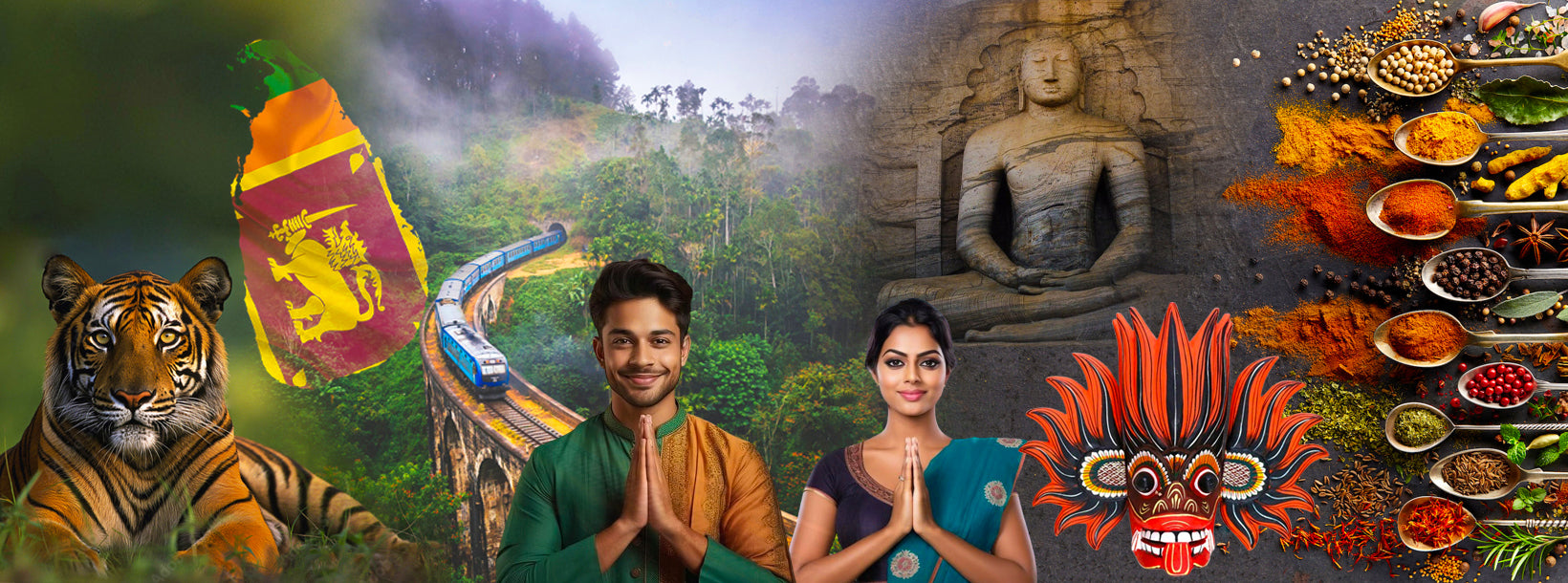
スリランカ
南アジアの島国スリランカは、豊かな文化遺産、多様な景観、そして野生動物で知られています。古代寺院、手つかずのビーチ、緑豊かな茶畑、活気あふれるお祭りなど、見どころは尽きません。スリランカならではの多様な文化の融合、温かいおもてなし、そして美味しい料理は、旅行者を魅了する旅先となっています。
The original inhabitants of Lankas Yakkas & Nagas
The original inhabitants of Sri Lanka, often referred to as Yakkas, Rakshasas, and Nagas, are an integral part of the island’s early history and cultural heritage. These indigenous groups were present on the island long before the arrival of Prince Vijaya and his companions, who are credited with initiating the first known colonization by an external group.
The Yakkas, commonly associated with "demon-worshippers," were not supernatural beings as their mythical portrayal might suggest. Instead, they were believed to be a totemic tribe with their own customs, beliefs, and social structures. Their reverence for nature and ancestral spirits often led later cultures to associate them with demonic practices, though these associations were more likely rooted in misunderstandings and myths rather than actual practices.
The Rakshasas were another indigenous group, often referenced alongside the Yakkas in Sri Lankan legends. Although the term "Rakshasa" often carries connotations of demon-like beings in South Asian mythology, in this context, it likely refers to another early tribe with distinct customs, possibly similar in nature to the Yakkas but with unique cultural practices and beliefs.
The Nagas, or "snake-worshippers," were a third prominent group among the early inhabitants. The term "Naga" has historical ties to snake veneration, a practice that was prevalent in various ancient cultures, including those in South Asia. In Sri Lanka, the Nagas primarily settled around the regions of Kelaniya and the northern peninsula. Nagadeepa (modern-day Nainathivu) was a notable settlement of the Naga people and remains a site of religious and cultural significance. Interestingly, Nagadeepa was originally an island off the peninsula but was connected to the mainland by a causeway about 30 years ago, symbolizing the enduring connection between the land and its people.
Notably, the Nagas were not unique to Sri Lanka. In northeastern India, there exists a state called Nagaland, which is home to the Naga people, an ethnic group that shares a cultural affinity with the ancient Nagas of Sri Lanka. This connection between the two regions underscores the shared cultural and historical ties among ancient civilizations across South Asia, with a common thread of totemic beliefs, especially the reverence of snakes.
These early tribes of Sri Lanka, the Yakkas, Rakshasas, and Nagas, were not supernatural beings as mythology might suggest, but indigenous communities with deep connections to the land, their totems, and their beliefs. Their legacy lives on through folklore, place names, and sacred sites across Sri Lanka, enriching the island’s history with layers of cultural heritage that predates the island’s more widely known colonial history.










